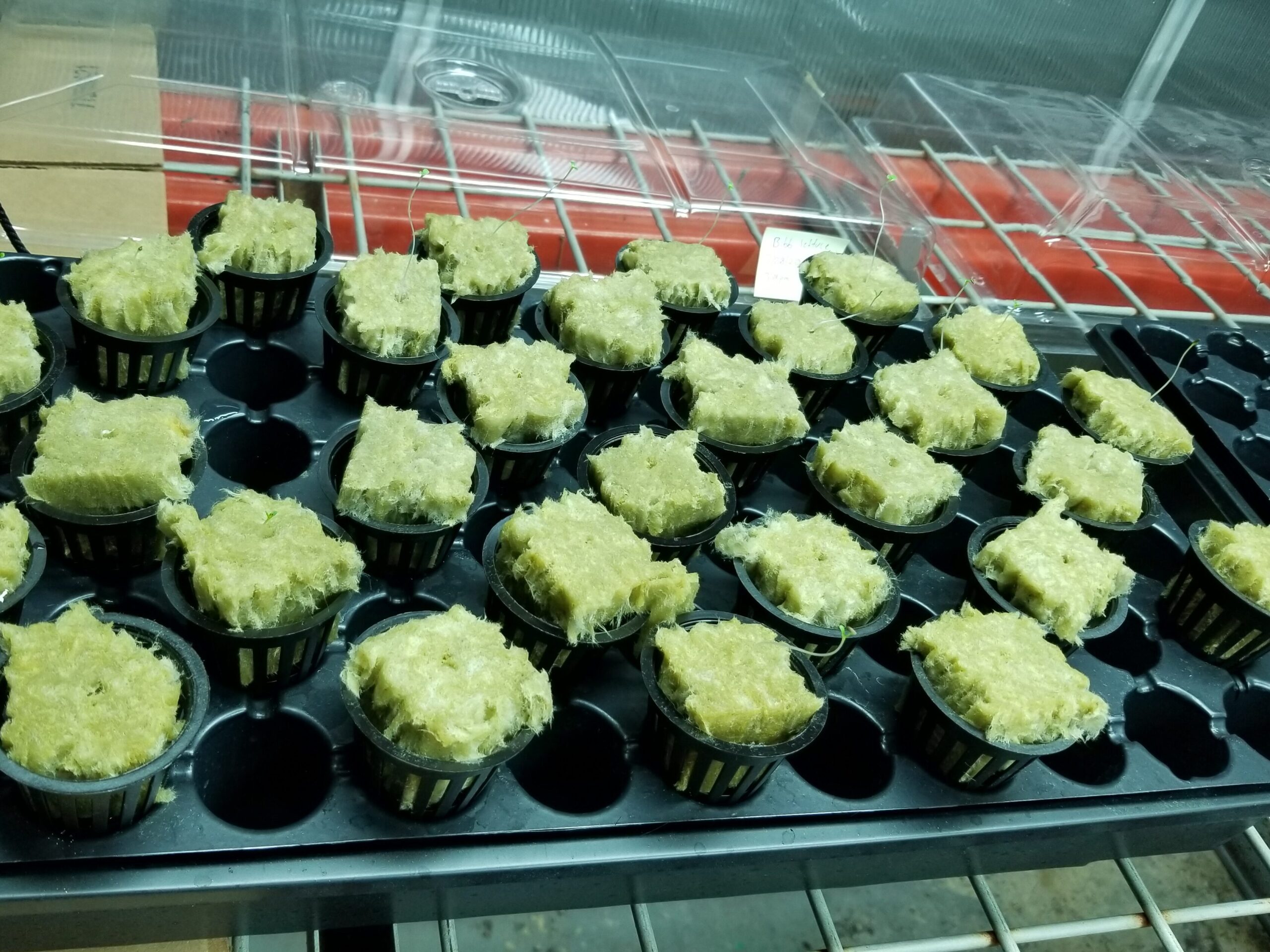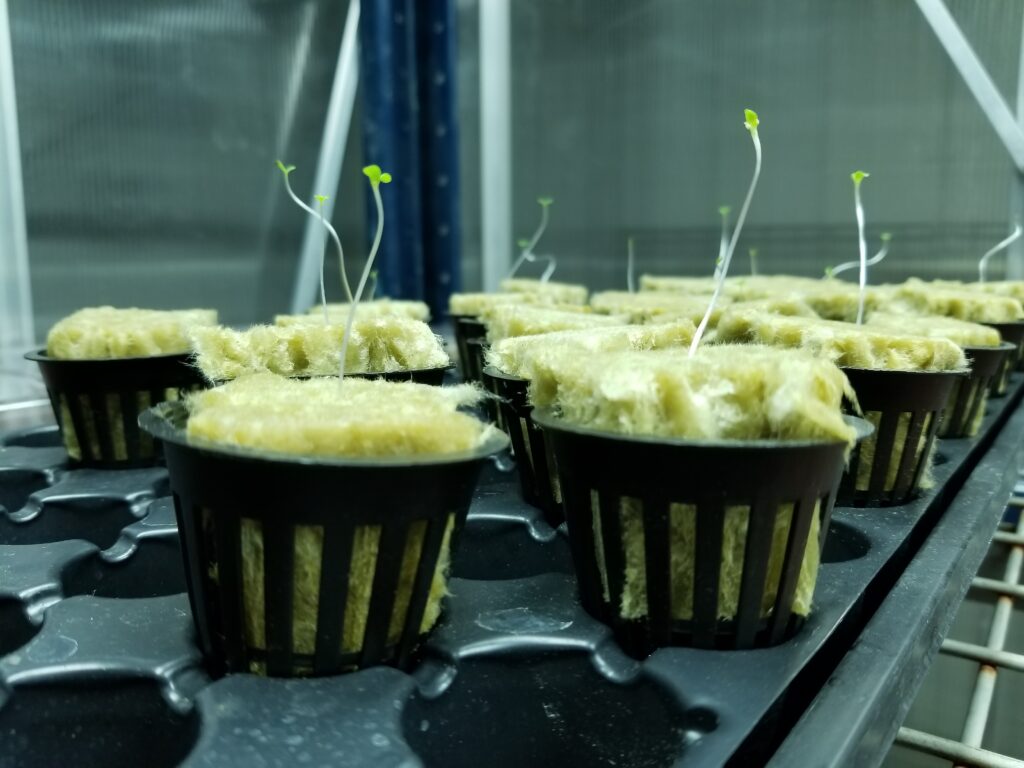There is something rewarding about growing your own plants. Watching with wonder as tiny little shoots begin to peak out from seeds that were sown by your own hands. I have had the opportunity to venture into hydroponics a couple of years ago. It has been a trial-and-error process, but also fun and fulfilling. It is awe inspiring to witness and be part of this part of the natural world.
This article focuses on the first step, which is germinating seeds for transfer to a hydroponic system. These tips can help you get started if you are interested in trying hydroponics.
Some things you will need to get started!
- A germination tray
- I ordered germination stations from Amazon. There are several types to choose from.
- You can also use plastic to-go containers with clear lids.
- Grow light
- There are several online to choose from.
- You can also place your tray by a window.
- You may also want a heating pad. Sometimes the grow lights provide enough heat but heating pads work great if not. These can be found online.
- Growing media
- This is what you will put the seeds in to grow. I will discuss rockwool and rapid rooter plugs.
- Seeds
- Check the growing conditions if they are suitable for hydroponics. How big will the get.
- Example of one of my mistakes: I put indeterminate (do not stop at a certain size) tomatoes in a greenhouse and had quite a tangle of vines everywhere!
- The packet will have germination time frames and instructions, as well as how to space the plants.
- Check the growing conditions if they are suitable for hydroponics. How big will the get.
Trial 1
The first experiment that I tried was with bib lettuce, which is harvestable in 5 to 6 weeks.
I used rockwool that came with holes in the top for seed placement. You may be wondering what rockwool is (I was at first).
Rockwool is made by spinning volcanic stone, kind of like making cotton candy, only with rock. Fibers that are similar to insulation are the result. Rockwool provides an ideal water to oxygen mix.
The image below shows the rockwool placed into the containers that will go directly into the hydroponic system (these are called net pots).

The first round of germinating seeds didn’t go well. Here is what I did wrong:
- Did not adjust the pH of the water used. Rockwool is alkaline (high pH) and lettuce likes lower pH.
- Did not put the sprouts under the grow light soon enough…oops. Poor things were on a frantic search for light.
- This resulted in leggy plants (see the pic below). They grew tall fragile stems that did not support the weight of the cotyledons (seed leaves) and flopped over.
- Roots never emerged from the rockwool cubes (even after weeks in the hydroponic system).

Trial 2
What I did different this time around:
- Presoaked the rockwool in pH 6 water (I adjusted with vinegar until I got my pH up/down solutions).
- I set the rockwool directly in the tray and transferred to net pots later.
- Placed the germination station dome under the grow lights right away.
- Lowered the grow light closer to the dome.
- Added pH adjusted water to the tray as needed.
Result: Happy little seedlings!

Another option
Another product that I like using is General Hydroponics rapid rooter plugs and have had successful germination with them. These are what I use currently. They are like a sponge and have a hole in the top for seed placement. They can be found on Amazon.
Here is what I like about them:
- Did not have to pH adjust.
- They fit right in my net pots which made it so I can drop them right in. The rockwool had to be trimmed to fit my net pots.
Happy platelets in the rapid rooter plugs!

When to transfer to the hydroponic system
Wait until the seedlings are growing true leaves. The first two leaves that they have when they first sprout are called seed leaves or cotyledons.
Think of cotyledons as already in place leaves that unfurl to start photosynthesizing ASAP. Kind of like a satellite unfurling its solar arrays once in orbit to start taking in sunlight for energy.
Once ready, I place the plugs into net pots (unless they are already in them. These hold the plants in the holes so that that roots take in the nutrients and water.
Here are some examples of systems:


Takeways
Here are a few takeaways:
- Provide enough light.
- Use a growing media that works for you (I provided information for types but there are more out there as well).
- Make sure to keep them from drying out.
- Check the growing conditions of the plant you are interested in trying.
Most important of all- Have fun with it!

